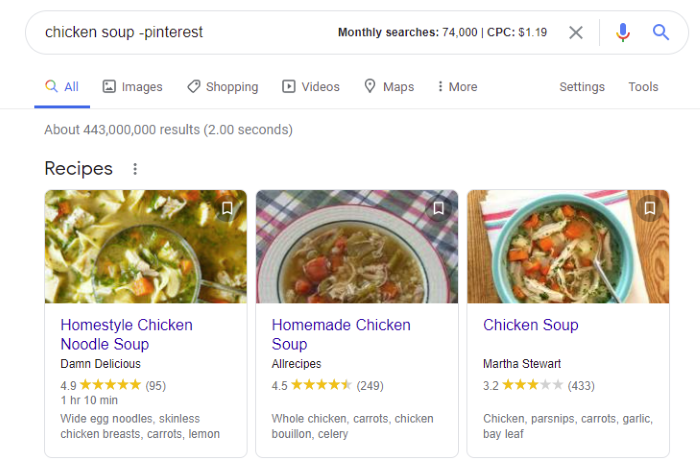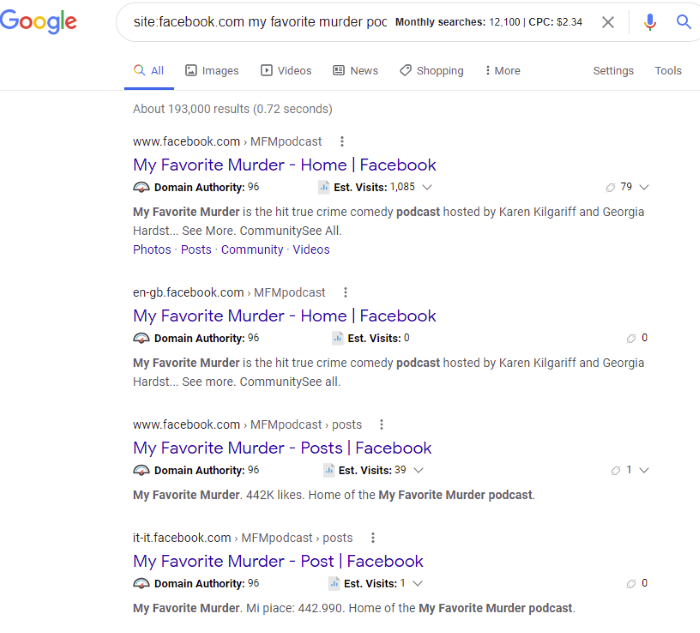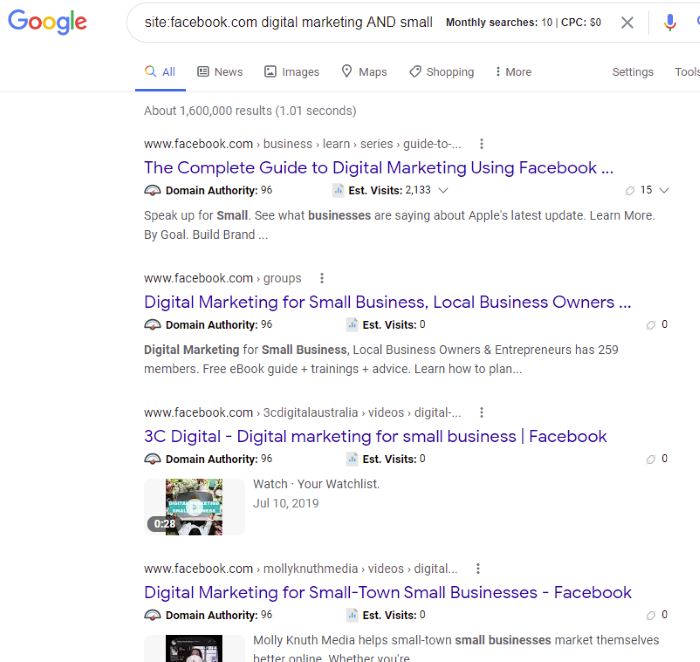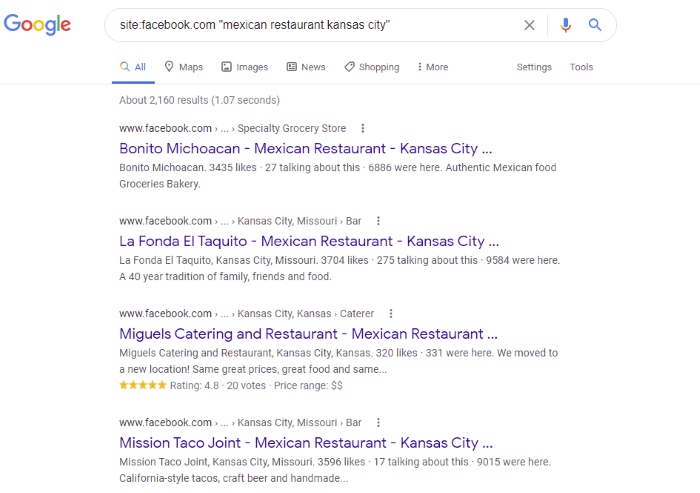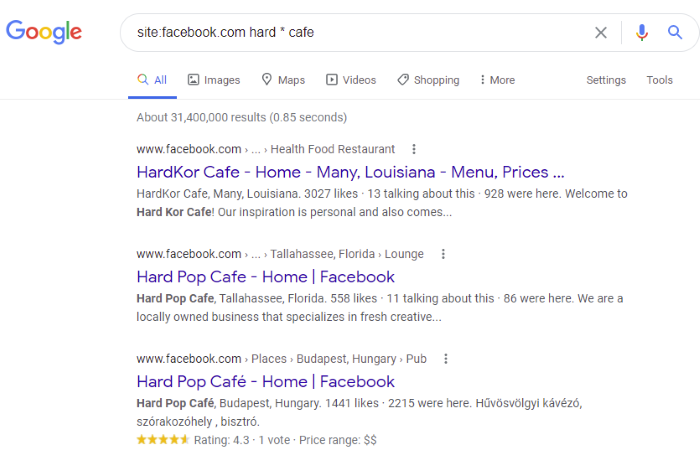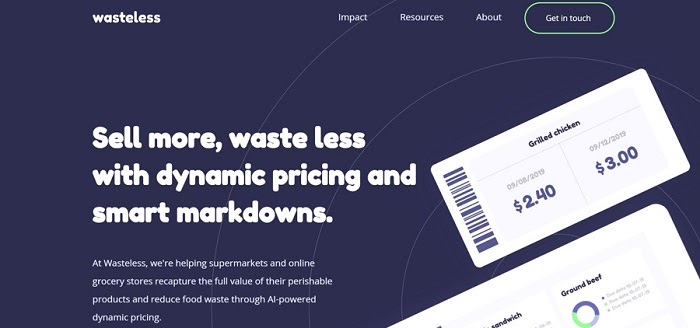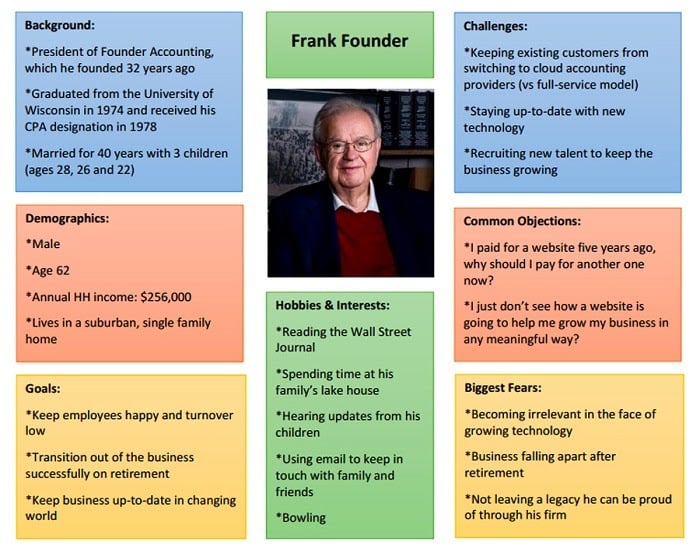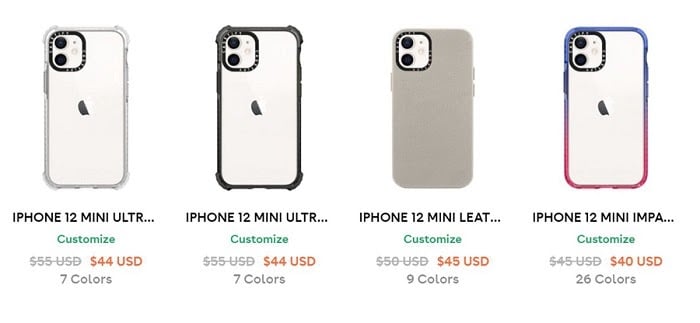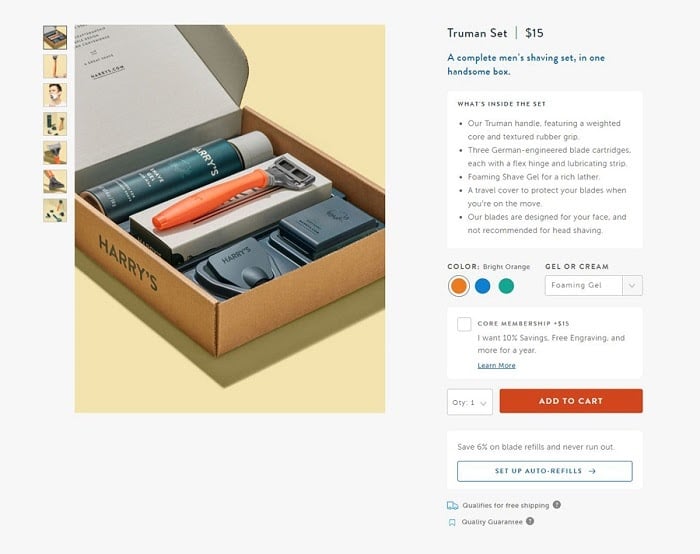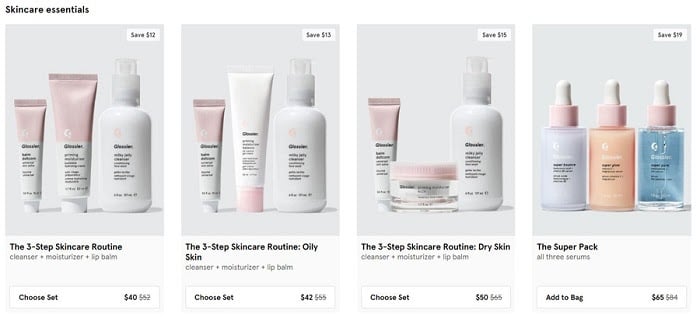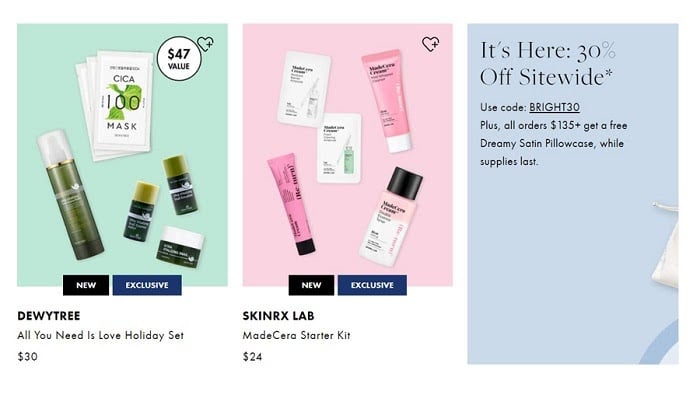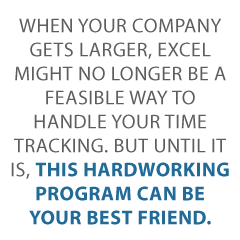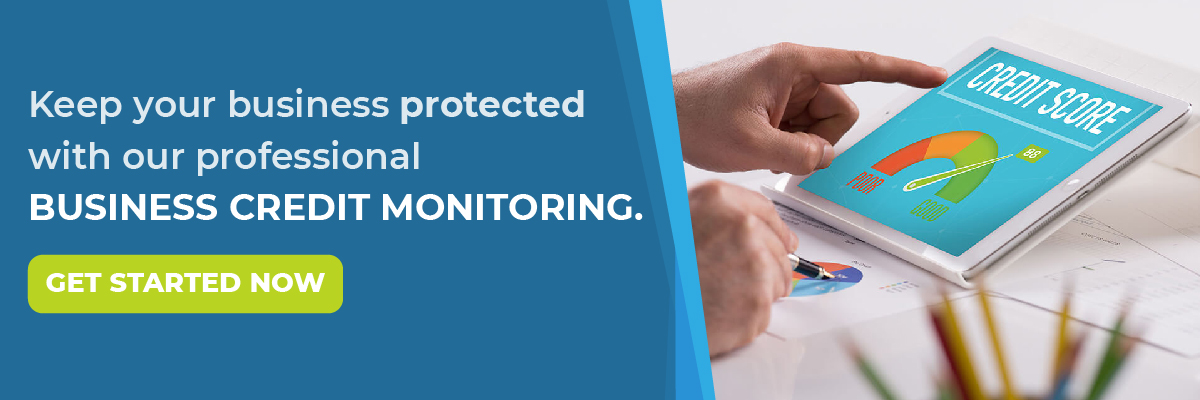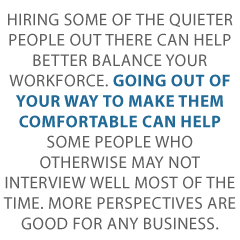
How to Use YouTube Ads to Grow Your Business
Being a marketer is an interesting job.
On the one hand, you’re expected to keep up with trends. When a new social media platform starts to take off, you’d better be there promoting your brand.
Still, you can’t just blindly follow those trends. Popular platforms become saturated with dozens of competitors, and standing out becomes nearly impossible.
Don’t get me wrong; social media ads can work wonders. I’ve just noticed there are plenty of underutilized marketing platforms right now. The most noticeable of which is YouTube ads.
YouTube ads are one of the most overlooked ad formats in digital marketing, and it’s easy to figure out why.
The massive focus on social media ads combined with the challenge of creating compelling high-quality video content makes YouTube ads a tough sell to small business owners.
Can YouTube ads be tough to grasp? Sure, at first. Luckily, once you get over that initial hurdle, YouTube ads offer some pretty unique marketing tools you can’t find anywhere else.
That’s why today, we’re taking a deep dive into the world of YouTube ads, from ad types to strategy. We’ll even walk you through creating your first one!
5 YouTube Ad Types
If you’re unfamiliar with YouTube, their primary advertising format is known as the TrueView ad. Before we can understand the value of skippable in-stream ads, we need to take a closer look at YouTube’s TrueView ad approach.
TrueView ads were created to solve a massive problem. Before TrueView ads, users lacked any meaningful way to control their advertising experience. Without a way to meaningfully interact with the content, ads ran the risk of being both frustrating and irrelevant.
YouTube was hoping to present itself as a valuable advertising platform, but its original approach to advertising severely limited the effectiveness and efficiency of brand marketing efforts. No brand wants to waste precious time and money selling to viewers who simply aren’t interested.
Here’s the simple explanation: Your brand only pays for TrueView Ads when viewers watch for at least 30 seconds, watch your entire video, or interact with your ad via call-to-action (CTA).
1. Skippable In-Stream Ads
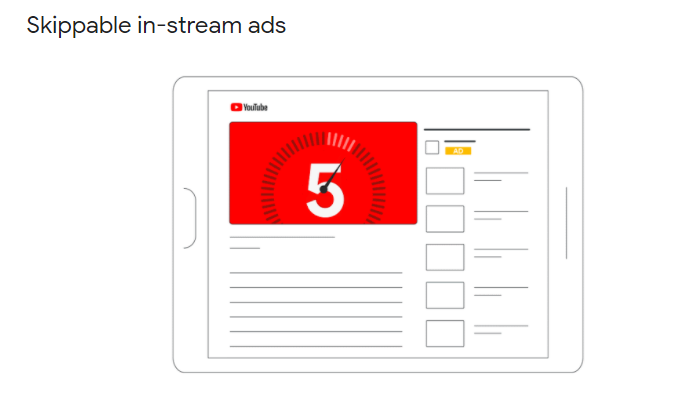
The first variation of the TrueView ad is the skippable in-stream ad. At a minimum of 12 seconds and a maximum of six minutes, in-stream ads play before a viewer’s video on YouTube.
These ads feature a countdown timer on screen, as well as a link to the brand website. You can also tag on a companion banner ad, but it’s worth pointing out these companion banner ads won’t be on all YouTube pages where your in-stream ads are served.
Of course, the most important part of this variant is the option to skip the video ad after five seconds. If they choose to skip and don’t interact with your ad, you don’t have to pay a dime. Assuming you uploaded the video to your YouTube channel, once the viewer watches for 30 seconds, a view is attributed to your view count.
2. Video Discovery Ads
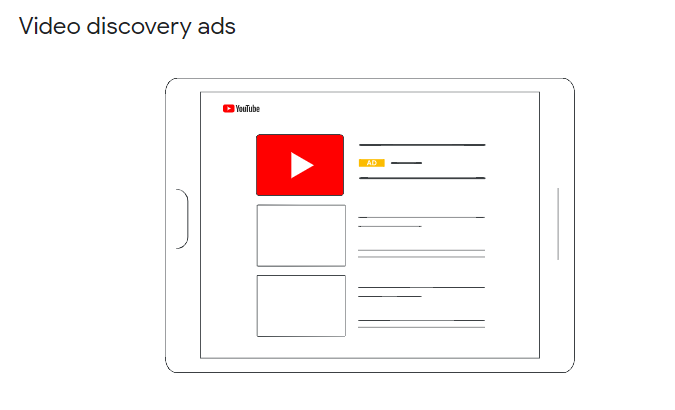
TrueView Discovery ads are promoted throughout YouTube, appearing as an image thumbnail with up to three lines of text. These ads function as an entirely optional way for viewers to consume your brand content.
Discovery ads are visible on the YouTube homepage, at the top of a viewer’s YouTube search results, and on the suggested videos list on their video’s watch page. The best part? Your brand doesn’t spend a dime on these ads unless viewers interact with them.
That’s what makes this advertising approach so useful to brands and marketers. TrueView ads work to protect both the viewer’s time and your brand’s money.
3. Non-Skippable In-Stream Ads
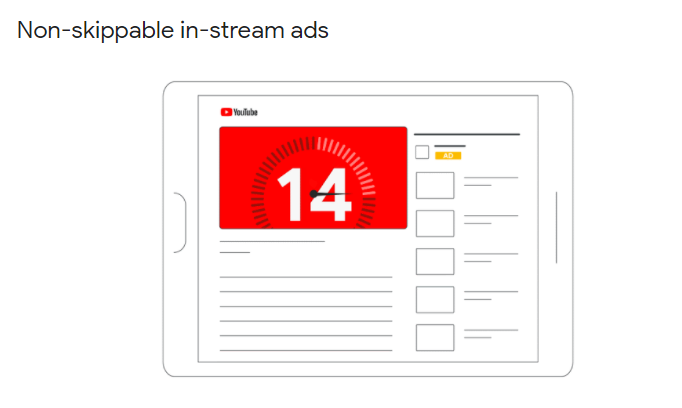
If the TrueView approach just doesn’t interest your brand, YouTube has plenty of other options. Non-skippable ads function a bit differently on this platform. They might look just like skippable ads on the surface, but you’ll be limited to a 15-second ad window for non-skippable ads.
Beyond that, you’ll be dealing with a cost per thousand (CPM) payment structure, forcing you to pay for every thousand views.
The only scenario where you’d want to use something like this is when you’re dealing with a proven target audience or when your brand is looking to maximize its reach. Otherwise, there’s a strong chance you could waste time and money selling to the wrong prospects.
4. Bumper Ads
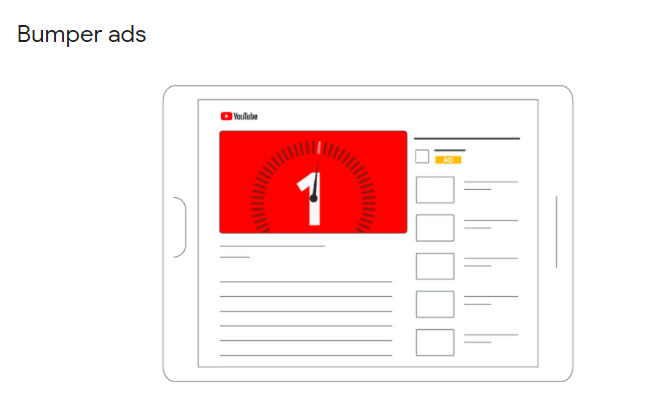
As you research YouTube ads, you’ll likely come across bumper ads and wonder what purpose they serve. What makes them different from the traditional non-skippable in-stream ad?
The most significant difference is the duration of your ad window. Instead of 20 seconds, bumper ads are expected to last less than six seconds.
Why would this distinction matter? Well, a viewer’s time and attention are valuable commodities. YouTube needs to protect their user experience, primarily by providing users with relevant information. YouTube limits these bumper ads to avoid frustrating viewers with non-skippable ads.
The key to making bumper ads work is creating something memorable. The format might not support long-form stories, but there are plenty of ways to portray your brand in five seconds.
5. Masthead Ads
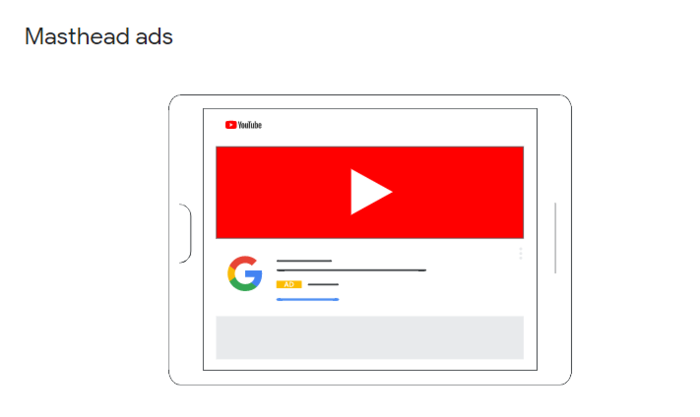
Think of YouTube Masthead as YouTube’s premium advertising experience. Imagine your ad being the first thing viewers see whenever they use the platform. It’s a marketer’s dream come true, and with good reason.
Of course, there’s a reason you’ve never seen a small business on that masthead. That premium experience comes with a premium price tag. At about $2 million per day, masthead ads are extremely expensive and far beyond the average brand’s marketing budget.
Think of these like Super Bowl ads: impressive reach and traffic, but not reasonable for most marketers. YouTube’s other advertising formats are more cost-effective, easier to experiment with, and generally more valuable to your brand’s marketing journey.
What Makes YouTube Ads Unique?
With all the different variants and the added work of creating a compelling video ad, some marketers might wonder why they should use YouTube ads over social media ads. After all, that’s a ton of extra work when you could just make some simple visuals on Facebook ads.
While it’s certainly easier to make ads on social media, YouTube is a powerful tool for brands looking to promote high-quality video content to a massive audience. In fact, in a side-by-side comparison, an Agorapulse study found YouTube ads produced more views, more clicks, and higher conversions than Facebook Ads!
How to Decide Which Kind of YouTube Ad Is Right for Your Business
You’re ready to get started with your YouTube video ads. You’ve done all your audience and keyword research, and you know what the messaging should look like. Now you just need to pick an ad format.
When you’re first getting started, settling on a format to use can quickly become confusing. Should you use TrueView ads because you’re only charged per interaction? Are impressions more important or is traffic your only priority?
If you’re completely new to the world of YouTube ads, this breakdown of video ad formats by marketing objective exists to help you take that first step forward. Not to worry, your brand will start to identify what works well over time via testing and data collection.
Brand Consideration: Video Discovery Ads
One of the most compelling reasons to experiment with discovery ads is their potential as a brand consideration tool.
Instead of focusing on squeezing in a quick ad before someone else’s video, you can integrate your ad content into the YouTube search experience. This is where your keyword research can really shine. Create content that revolves around those low competition keywords with high volume.
When viewers click on your ad, they’ll be taken to your YouTube channel to watch that video. The goal here is less about CTAs and conversion and more about providing a closer look at your brand. If you have great instructional videos or interesting presentations, a discovery ad can work wonders for you.
Brand Awareness: Non-Skippable Ads
For the sake of clarity, let’s define a few terms before we move on. Brand awareness is about maximizing visibility for your brand. Ideally, it lays the foundation for effective lead generation.
The main objective of lead generation is to both identify likely prospects quickly and offer properly defined metrics. Both lead generation and brand awareness are powerful tools when used correctly, but it’s vital you understand when to best use them.
Think of brand awareness as the top of the marketing funnel, leading into quality lead generation.
If your primary marketing goal is casting a wide net, non-skippable ads can effectively raise awareness for your brand. These ads can appear pre-roll, mid-roll, or even post-roll. If you’re worried about placement, YouTube serves these ads whenever they believe viewers are most likely to watch.
Lead Generation: TrueView In-Stream Ads
Maximizing brand awareness is great, but if you want to turn your traffic into interested prospects, you’ll need ad content that truly converts.
TrueView in-stream ads are perfect for this because they’re designed to be skippable. They introduce a level of reliability to the marketing experience. This potential prospect found the first five seconds of your ad compelling and was willing to stick around.
My favorite part? If a viewer doesn’t want to consume your content, they can just leave, at no cost to you. If the viewer does want to interact, they’ve now provided you with some very valuable information. They’re genuinely interested in your brand!
Message Reinforcement: Bumper Ads
Let’s say you’ve already established an audience via digital media. You want to get a message out to them, maybe to announce your latest shoe release or phone launch. You need to maximize your budget, but you don’t really need to educate your target audience on the brand.
This is one of the scenarios where bumper ads perform well. The bumper ad doesn’t allow for much in terms of storytelling or education. What it can do is allow just enough time to hype up a new product or service.
Reach: Masthead Ads
We’ve already established that Masthead ads aren’t for the average small business. While they may not be a cost-effective way to market your brand, they do highlight a lesson about ad budgets in marketing: specifically, the concept of ROI.
On the surface, spending millions of dollars on a single ad can seem ridiculous. What if the messaging doesn’t land perfectly? What if you were wrong about the target audience’s pain points? It seems like such a massive risk. Still, massive brands are doing this regularly. Why?
Well, consider how these massive brands approach marketing. With millions on the line, their latest marketing campaign is composed of detailed, layered strategy with one element at its center: data, and lots of it.
This data, likely collected over several years, confirms they’ll receive a positive ROI from this investment. Where small brands see risk, massive brands see growth opportunities.
Of course, it’s not like only massive brands are entitled to that level of confidence. The commitment to making data-driven decisions is what elevates any marketing strategy.
Masthead ads aren’t impressive because they’re expensive. They’re impressive because they show that with enough data, even the biggest risks become manageable.
How to Create a Video Ad for YouTube
Let’s say you’ve never created a video ad before. All this video ad strategy sounds great, but it won’t make you a master visual content creator overnight. Fortunately, you don’t need to spend months learning how to edit to make compelling videos. When in doubt, a little external guidance goes a long way.
Google is hard at work getting YouTube Video Builder, their accessible video creation software, ready for the public. In the meantime, tools like Promo and Animoto walk you through the process of building strong video ads in minutes.
Measure the Success of Your YouTube Ads
YouTube ads track plenty of metrics for you automatically, everything from watch time to engaged-views data is available, if you’re interested.
Unfortunately, that much information can be overwhelming when you’re new to the platform. When you’re first getting started, focus on view rate for skippable ads. This is essentially your true engagement rate, determining how well you can turn viewers into interested prospects.
If your view rate is low, there are a few possibilities. Maybe your headline doesn’t draw people in. Maybe your video doesn’t capture the viewer’s attention quickly enough. Remember those first five seconds need to be compelling.
For non-skippable ads, the focus is still on engagement. The only difference is that you’ll use click-through rate (CTR) to determine whether your ad connects your target audience.
If your CTR is unusually low, there are two possibilities. Either the video is being delivered to the wrong audience or the video itself is not connecting with your target audience. I advise testing for both by experimenting with different target audiences and creating multiple videos.
How to Create YouTube Ads
Ready to get started? Here’s how to create your first YouTube ad.
- Upload Your Video
Log into your brand’s YouTube account and click on the camcorder icon on the top-right of YouTube. Then, click “Upload Video.”
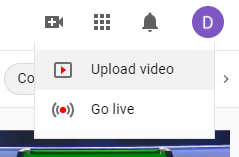
From there, you’ll be taken to the upload window where you can now upload your video. Make sure you fill in title, description, and tag information. - Create Your Campaign
Sign in to your Google Ads Account and select “New Campaign.”
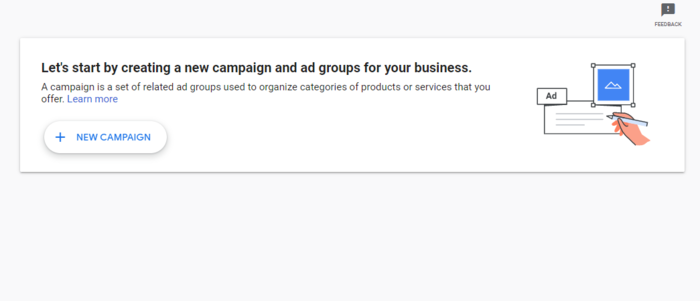
You’ll see an option to choose a campaign goal, but just click on “create a campaign without a goal’s guidance” for now. You can now select a campaign type, so select “Video” or “Display,” based on your goals.For our purposes, we’re going to focus on the “Video” option. At this point, you’ll be asked to select a campaign subtype. Select the most appropriate option and click “Continue.”
- Configure Your Campaign
Now that you’ve created your campaign, it’s time to configure it properly. Start by giving your campaign a name for easy data collection.
Then, confirm your bid strategy, ad budget, and campaign duration. From there, also confirm your networks, locations, and languages.
Content exclusions are in this section as well. This determines where your ads are shown. If your brand is typically family-friendly, you’ll likely want to choose limited inventory. If your brand is more mature, expanded inventory could be a good fit. You can also exclude certain types of content and labels here.
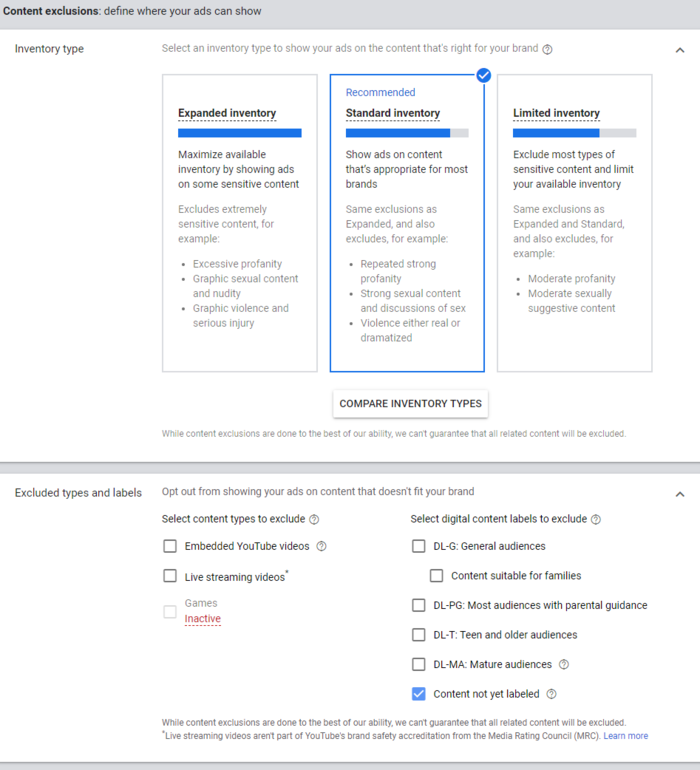
- Target Your Audience
When targeting your audience, start by defining their demographic information including age, gender, parental status, and household income. Google also lets you experiment with some more specific audiences like “bachelor’s degree” or “health care industry.”
Use keywords, topics, and placements to further narrow down your targeting.
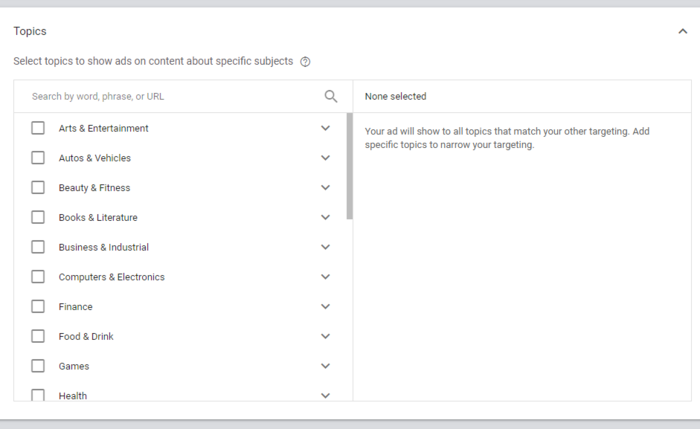
- Finalize Your Ad
Set your maximum bid. In the “Create your video ad” section, find your YouTube video and choose the appropriate video ad format (as listed in the above sections.)
Once your video ad format is selected, fill in the “Final URL” and “Display URL” sections. You can also include your call-to-action and your headline here.
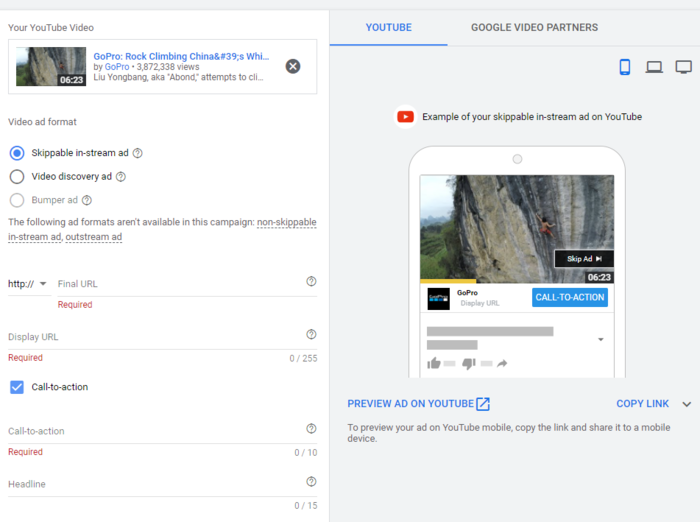
You can auto-generate a companion banner, or upload your own below.
Once you’re ready, click “Create Campaign” and you’re all set!
Final Thoughts on Growing Your Business With YouTube Ads
Listen, I get it. Wrapping your head around YouTube ad creation can be a bit of a challenge at first.
The idea behind this guide is to arm you with a strong foundational understanding of how YouTube ads function, and how you can make your own.
Feel free to bookmark this guide if you ever need a refresher course, especially when it comes to campaign and video creation.
Fortunately, YouTube ads function just like any other digital marketing platform. Focus on your key metrics, test regularly, and above all else, respect the data. The path to consistent growth might not be glamorous, but it certainly gets results.
What digital marketing platform do you think is underutilized right now?


